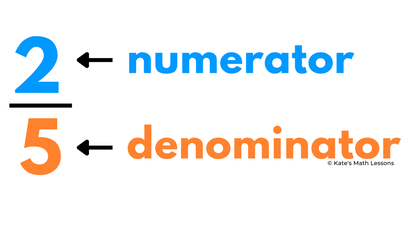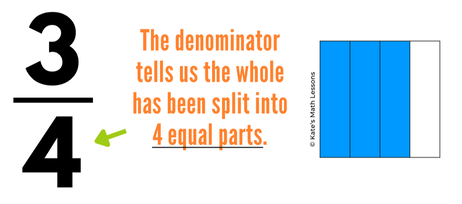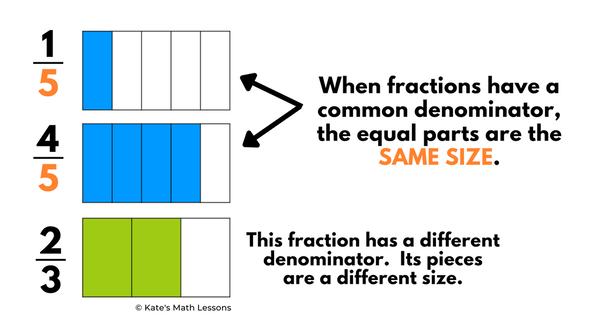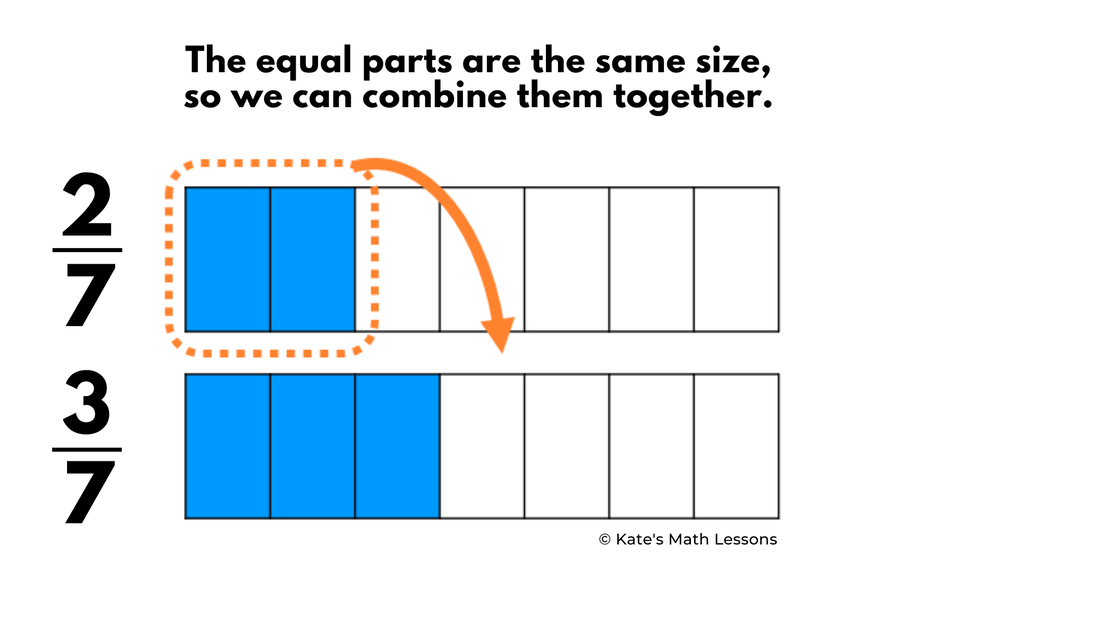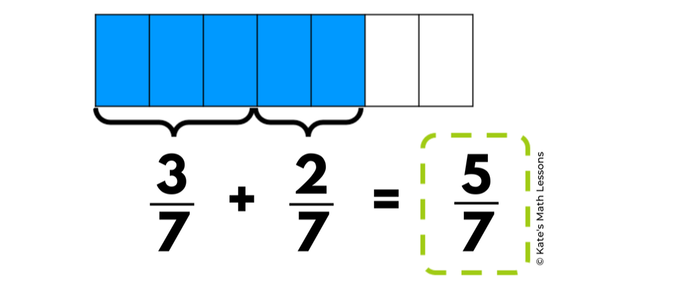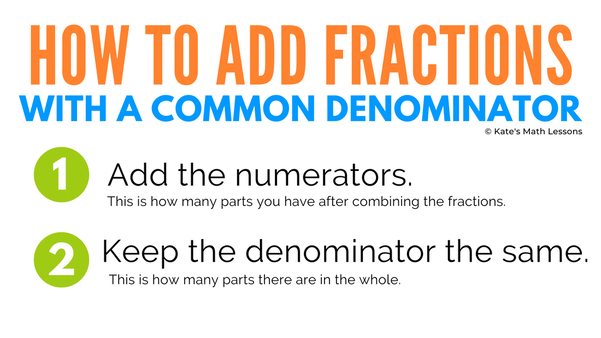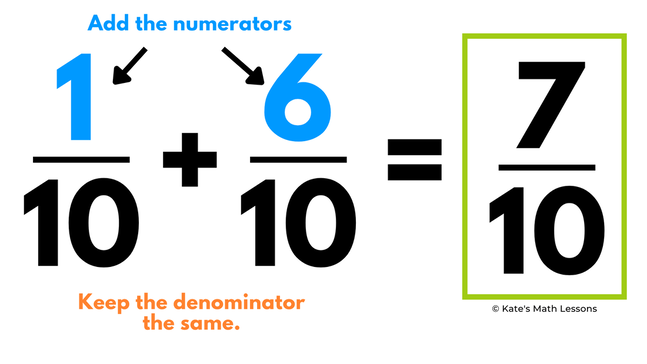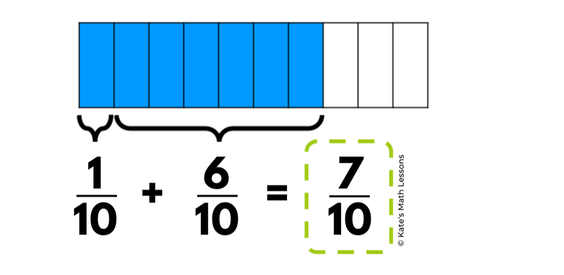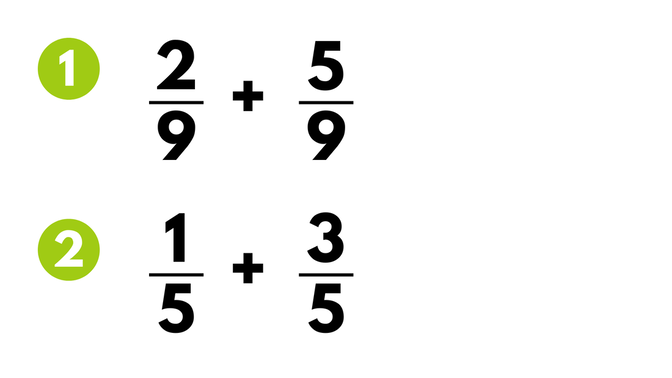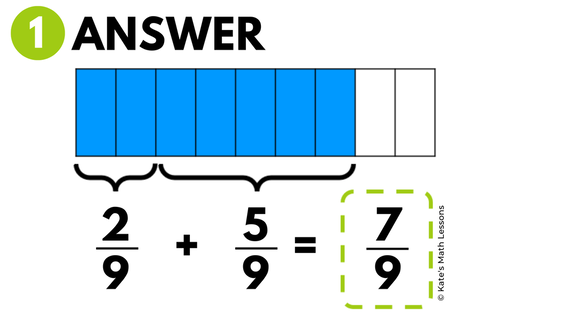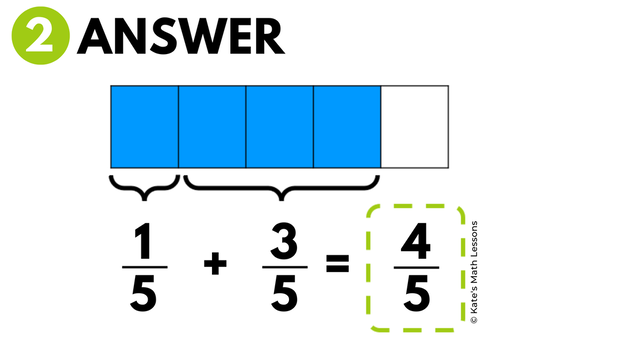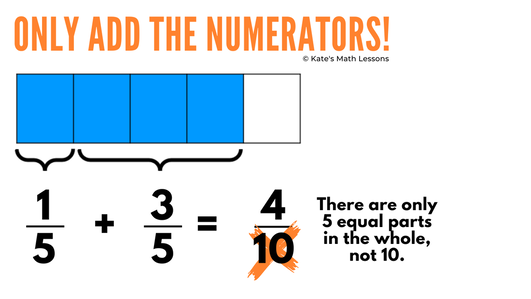|
Accompanying Resources: Adding Fractions Boom Cards, Digital Fraction Activities, Printable Study Guide,
|
|
We can add 2/7 to the 3/7 by filling in an additional 2 boxes in the diagram. We can see that this gives us a sum of 5/7. (2 parts plus 3 more parts equals 5 parts out of 7 total)
If you're adding two fractions with a common denominator, you can combine them together by adding the numerators together (the top numbers). The denominator will always stay the same because the size of the equal pieces does not change when you combine the two fractions together.
For example, let's say you have 1/10 + 6/10. They have the same denominator, so they can be combined together. Add the numerators (1 + 6 = 7). Keep the denominator the same (the bottom number stays a 10).
Remember, the denominator does not change because the sizes of the pieces stay the same. You're just counting up the total number of pieces when you add the two fractions.
Here's a visual way to look at the same problem:
Here's a visual way to look at the same problem:
Adding Fractions Examples
Try adding these fractions on your own and then scroll down to see if you're correct! When in doubt, it can help to draw a picture to help you visualize the problem.
Before you add the fractions, make sure to check that they have the same denominator! If the denominators are different, we can't combine them because the pieces are not the same size.
In the first problem, both the denominators are 9 so they have a common denominator. We can add the fractions 2/9 and 5/9 together by adding the numerators and keeping the same denominator. This gives us the fraction 7/9.
In the first problem, both the denominators are 9 so they have a common denominator. We can add the fractions 2/9 and 5/9 together by adding the numerators and keeping the same denominator. This gives us the fraction 7/9.
In the second problem, both fractions have a common denominator of 5. This means we can add the numerators together (the 1 and the 3) and keep the same denominator (there are a total of 5 pieces in the whole). This gives us the sum of 4/5.
Adding Fractions Common Mistake
A common mistake I see students make when they are adding fractions is that they accidentally add both the numerators and denominators. Don't add the bottom numbers! The denominator tells you how many equal parts there are in the whole, this number will stay the same when you add fractions.
Video
Want to see some more examples? Check out the short adding fractions video below.
Practice Adding Fractions
Think you're ready to try adding fractions on your own? Click the START button below to try a practice quiz.
|
Powered by Interact |
Ready to learn how to add or subtract fractions with different denominators?
Want to learn how to multiply fractions or divide with fractions?



